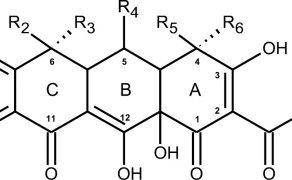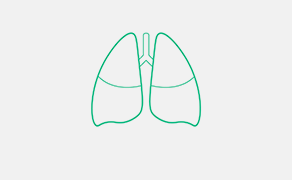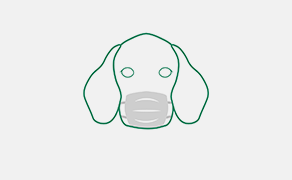Charakterystyka tetracyklin stosowanych w medycynie weterynaryjnej
Piśmiennictwo
- Nelson M.L., Levy S.B.: The history of the tetracyclines. „Ann. N. Y. Acad. Sci.”, 2011 vol. 1241, s. 17-32.
- Charest M.G. i wsp.: Synthesis of minus-tetracycline. „J. Am. Chem. Soc.”, 2005, vol. 127, s. 8292-8293.
- Chopra I., Roberts M.: Tetracycline antibiotics: mode of action, applications, molecular biology, and epidemiology of bacterial resistance. „Microbiol. Mol. Biol. Rev.”, 2001, vol. 65, s. 232-260.
- McCormick J.R. i wsp.: A new family of antibiotics: the demethyltetracyclines. „J. Am. Chem. Soc.”, 1957, vol. 79, s. 4561-4563.
- Dürckheimer W.: Tetracyclines: chemistry, biochemistry, and structure-activity relations. „Angew. Chem. Internal. Ed. Engl.”, 1975, vol. 14, s. 721-734.
- Van Bambeke F., Balzi E., Tulkens P.M.: Antibiotic efflux pumps. „Biochem. Pharmacol.”, 2000, vol. 60, s. 457-470.
- Miyake Y. i wsp.: In vitro activity of tetracyclines, macrolides, quinolones, clindamycin and metronidazole against periodontopathic bacteria. „J. Periodont. Res.”, 1995, vol. 30, s. 290-293.
- Zhanel G.G. i wsp.: The glycylcyclines: a comparative review with the tetracyclines. „Drugs”, 2004, vol. 64, s. 63-88.
- Dahl E.L. i wsp.: Tetracyclines specifically target the apicoplast of the malaria parasite Plasmodium falciparum. „Antimicrob. Agents. Chemother.”, 2006, vol. 50, s. 3124-3131.
- Dibner J.J., Richards J.D.: Antibiotic growth promoters in agriculture: history and mode of action. „Poult. Sci”, 2005, vol. 84, s. 634-643.
- Klein N.C., Cunha B.A.: Tetracyclines. „Med. Clin. North. Am.”, 1995, vol. 79, s. 789-801.
- Thaker M., Spanogiannopoulos P., Wright G.D.: The tetracycline resistome. „Cell. Mol. Life. Sci.”, 2010, vol. 67, s. 419-431.
- Petkovic H. i wsp.: Genetics of Streptomyces rimosus, the oxytetracycline producer. „Microbiol. Mol. Biol. Rev.”, 2006, vol. 70, s. 704-728.
- Moore I.F., Hughes D.W., Wright G.D.: Tigecycline is modified by the flavin-dependent monooxygenase Tetx. „Biochemistry”, 2005, vol. 44, s. 11829-11835.
- Epe B., Woolley P.: The Binding of 6-demethylchlortetracycline to 70S, 50S and 30S ribosomal particles: a quantitative study by fluorescence anisotropy. „EMBO J.”, 1984, vol. 3, s. 121-126.
- Goldman R.A. i wsp.: Photoincorporation of tetracycline into Escherichia coli ribosomes. Identification of the major proteins photolabeled by native tetracycline and tetracycline photoproducts and implications for the inhibitory action of tetracycline on protein synthesis. „Biochemistry”, 1983, vol. 22, s. 359-368.
- Brodersen D.E. i wsp.: The structural basis for the action of the antibiotics tetracycline, pactamycin and hygromycin B on the 30S ribosomal subunit. „Cell”, 2000, vol. 103, s. 1143-1154.
- Schnappinger D., Hillen W.: Tetracyclines: antibiotic action, uptake, and resistance mechanisms. „Arch. Microbiol.”, 1996, vol. 165, s. 359-369.
- Griffin M.O., Ceballos G., Villarreal F.J.: Tetracycline compounds with non-antimicrobial organ protective properties: possible mechanisms of action. „Pharmacol. Res.”, 2011, vol. 63, s 102-107.
- Acharya M.R. i wsp.: Chemically modified tetracyclines as inhibitors of matrix metalloproteinases. „Drug. Resist. Updat.”, 2004, vol. 7, s. 195-208.
- Hu J. i wsp.: Matrix metalloproteinase inhibitors as therapy for inflammatory and vascular diseases. „Nat. Rev. Drug. Discov.”, 2007, vol. 6, s. 480-498.
- Chen M. i wsp.: Minocycline inhibits caspase-1 and caspase-3 expression and delays mortality in a transgenic mouse model of huntington disease. „Nat. Med.”, 2000, vol. 6, s. 797-801.
- Amin A.R. i wsp.: A novel mechanism of action of tetracyclines: effects on nitric oxide synthases. „Proc. Natl. Acad. Sci. USA”, 1996, vol. 93, s. 14014-14019.
- Kraus R.L. i wsp.: Antioxidant properties of minocycline: neuroprotection in an oxidative stress assay and direct radical-scavenging activity. „J. Neurochem.”, 2005, vol. 94, s. 19-827.
- Krakauer T., Buckley M.: Doxycycline is anti-inflammatory and inhibits staphylococcal exotoxin-induced cytokines and chemokines. „Antimicrob. Agents Chemother.”, 2003, vol. 47, s. 3630-3633.
- Riond J.L. i wsp.: Cardiovascular effects and fatalities associated with intravenous administration of doxycycline to horses and ponies. „Equine Vet. J.”, 1992, vol. 24, s. 41-45.
- Pollet R.A. i wsp.: Pharmacokinetics of chlortetracycline potentiation with citric acid in the chicken. „Am. J. Vet. Res.”, 1983, vol. 44, s. 1718-1721.
- Anadón A. i wsp.: Plasma disposition and tissue depletion of chlortetracycline in the food producing animals, chickens for fattening. „Food Chem. Toxicol.”, 2012, vol. 50, s. 2714-2721.
- Pollet R.A., Glatz C.E., Dyer D.C.: Oral absorption of chlortetracycline in turkeys: influence of citric acid and Pasteurella multocida infection. „Poult. Sci.”, 1984, vol. 63, s. 1110-1114.
- Dyer D.C.: Pharmacokinetics of chlortetracycline in the turkey: evaluation of biliary secretion. „Am. J. Vet. Res.”, 1988, vol. 49, s. 36-37.
- Nielsen P., Gyrd-Hansen N.: Bioavailability of oxytetracycline, tetracycline and chlortetracycline after oral administration to fed and fasted pigs. „J. Vet. Pharmacol. Ther.”, 1996, vol. 19, s. 305-311.
- Kilroy C.R. i wsp.: Chlortetracycline in swine-bioavailability and pharmacokinetics in fasted and fed pigs. „J. Vet. Pharmacol. Ther.”, 1990, vol. 13, s. 49-58.
- Wanner M. i wsp.: Influence of dietary citric acid and calcium on the bioavailability of orally administered chlortetracycline in piglets. „J. Vet. Med. A.”, 1991, vol. 38, s. 755-762.
- Mevius D.J., Vellenga L., Breukink H.J.: Pharmacokinetics and renal clearance of oxytetracycline in piglets following intravenous and oral administration. „Vet. Quarter”, 1986, vol. 8, s. 74-85.
- Pijpers A. i wsp.: The influence of disease on feed and water consumption and on pharmacokinetics of orally administered oxytetracycline in pigs. „J. Anim. Sci.”, 1991, vol. 69, s. 2947-2954.
- Nouws J.F., Vree T.B.: Effect of injection site on the bioavailability of an oxytetracycline formulation in ruminant calves. „Vet. Quarter”, 1983, vol. 5, s. 165-170.
- Nouws J.F., Van Ginneken C.A., Ziv G.: Age-dependent pharmacokinetics of oxytetracycline in ruminants. „J. Vet. Pharmacol. Ther.”, 1983, vol. 6, s. 59-66.
- Grondel J.L. i wsp.: Pharmacokinetics and tissue distribution of oxytetracycline in carp, Cyprinus Carpio L., following different routes of administration. „J. Fish. Dis.”, 1987, vol. 10, s. 153-163.
- Elema M.O., Hoff K.A., Kristensen H.G.: Bioavailability of oxytetracycline from medicated feed administered to atlantic salmon (Salmo Salar L.) in seawater. „Aquaculture”, 1996, vol. 143, s. 7-14.
- Grondel J.L. i wsp.: Comparative pharamockinetics of oxytetracycline in rainbow trout (Salmo gairdneri) and african catfish (Clarias gariepinus). „J. Vet. Pharmacol. Ther.”, 1989, vol. 12, s. 157-162.
- Anadón A.: Pharmacokinetics of tetracycline in chickens after intravenous administration. „Poult. Sci.”, 1985, vol. 64, s. 2273-2279.
- Kniffen T.S. i wsp.: Bioavailability, pharmacokinetics, and plasma concentration of tetracycline hydrochloride fed to swine. „Am. J. Vet. Res.”, 1989, vol. 50, s. 518-521.
- Rajaian H., Soleimani Mohammadi E.: Pharmacokinetics of tetracycline hydrochloride in fat-tailed sheep. „IJVR”, 2007, vol. 8, s. 138-143.
- Plakas S.M., Mcphearson R.M., Guarino A.M.: Disposition and bioavailability of 3H-tetracycline in the channel catfish (Ictalurus punctatus). „Xenobiotica”, 1988, vol. 18, s. 83-93.
- Anadón A. i wsp.: Pharmacokinetics of doxycycline in broiler chickens. „Avian Pathol.”, 1994, vol. 23, s. 79-90.
- 46. Laczay P. i wsp.: Pharmacokinetics and bioavailability of doxycycline in fasted and nonfasted broiler chickens. „Acta Vet. Hung.”, 2001, vol. 49, s. 31-37.
- Santos M.D. i wsp. Pharmacokinetics and bioavailability of doxycycline in turkeys. „J. Vet. Pharmacol. Ther.”, 1996, vol. 19, s. 274-280.
- Baert K. i wsp.: Pharmacokinetics and oral bioavailability of a doxycycline formulation (Doxycycline 75%) in nonfasted young pigs. „J. Vet. Pharmacol. Ther.”, 2000, vol. 23, s. 45-48.
- He J. i wsp.: Pharmacokinetics of doxycycline hydrochloride sustain-released injection in swine. „Chin. J. Vet. Sci.”, 2008, vol. 28, s. 175-180.
- Riond J.L., Riviere J.E.: Pharmacokinetics and metabolic inertness of doxycycline in young pigs. „Am. J. Vet. Res.”, 1990, vol. 51, s. 1271-1275.
- Meijer L.A. i wsp.: Pharmacokinetics and bioavailability of doxycycline hyclate after oral administration in calves. „Vet Quarter”, 1993, vol. 15, s. 1-5.
- Riond J.L., Tyczkowska K., Riviere J.E.: Pharmacokinetics and metabolic inertness of doxycycline in calves with mature or immature rumen function. „Am. J. Vet. Res.”, 1989, vol. 50, s. 1329-1333.
- Gutiérrez L. i wsp.: Pharmacokinetics of an injectable long-acting formulation of doxycycline hyclate in dogs. „Acta. Vet. Scand.”, 2012, vol. 54, s. 1-7.
- Riond J.L., Vaden S.L., Riviere J.E.: Comparative pharmacokinetics of doxycycline in cats and dogs. „J. Vet. Pharmacol. Ther.”, 1990, vol. 13, s. 415-424.
- Wilson R.C. i wsp.: Pharmacokinetics of doxycycline in dogs. „Can. J. Vet. Res.”, 1988, vol. 52, s. 12-14.
- Gabler W.L.: Fluxes and accumulation of tetracyclines by human blood cells. „Res. Commun. Chem. Pathol. Pharmacol.”, 1991, vol. 72, s. 39-51.
- Davis J.L., Salmon J.H., Papich M.G.: Pharmacokinetics and tissue distribution of doxycycline after oral administration of single and multiple doses in horses. „Am. J. Vet. Res.”, 2006, vol. 67, s. 310-316.
- Harms C.A. i wsp.: Pharmacokinetics of oxytetracycline in loggerhead sea turtles (Caretta caretta) after single intravenous and intramuscular injections. „J. Zoo Wildl. Med.”, 2004, vol. 35, s. 477-488.
- Ames T.R., Larson L.V., Stowf C.M.: Oxytetracycline concentrations in healthy and diseased calves. „Am. J. Vet. Res.”, 1983, vol. 44, s. 1354-1357.
- Oka H., Ito Y., Matsumoto H.: Chromatographic analysis of tetracycline antibiotics in foods. „J. Chromatogr. A.”, 2000, vol. 882, s. 109-133.
- Croubels S. i wsp.: Liquid chromatographic separation of doxycycline and 4-epidoxycycline in a tissue depletion study of doxycycline in turkeys. „J. Chromatogr. B. Biomed. Sci. Appl.”, 1998, vol. 708, s. 145-152.
- Zurhelle G. i wsp.: Metabolites of oxytetracycline, tetracycline, and chlortetracycline and their distribution in egg white, egg yolk, and hen plasma. „J. Agric. Food. Chem.”, 2000, vol. 48, s. 6392-6396.
- Cherlet M., De Baere S., De Backer P.: Quantitative analysis of oxytetracycline and its 4-epimer in calf tissues by high-performance liquid chromatography combined with positive electrospray ionization mass spectrometry. „Analyst”, 2003, vol. 128, s. 871-878.
- Schach von Wittenau M., Twomey T.M.: The disposition of doxycycline by man and dog. „Chemotherapy”, 1971, vol. 16, s. 217-228.
- Anonymous: Tetracylines veterinary – systemic. „J. Vet. Pharmacol. Ther.”, 2003, vol. 26 suppl 2, s. 225-252.
- Humbert P. i wsp.: Use of anti-collagenase properties of doxycycline in treatment of alpha 1-antitrypsin deficiency panniculitis. „Acta Derm. Venereol.”, 1991, vol. 71, s. 189-194.
- Joshi R.K. i wsp.: Successful treatment of Sweet’s syndrome with doxycycline. „Br. J. Dermatol.”, 1993, vol. 128, s. 584-586.
- Bachelez H. i wsp.: The use of tetracyclines for the treatment of sarcoidosis. „Arch. Dermatol.”, 2001, vol. 137, s. 69-73.
- Berth-Jones J. i wsp.: The successful use of minocycline in pyoderma gangrenosum – a report of seven cases and review of the literature. „J. Dermatol. Treat.”, 1989, vol. 1, s. 23-25.
- Tilley B.C. i wsp.: Minocycline in rheumatoid arthritis: a 48 week double-blind placebo controlled trial. „Ann. Intern. Med.”, 1995, vol. 122, s. 81-89.
- Le C.H., Morales A., Trentham D.E.: Minocycline in early diffuse scleroderma. „Lancet”, 1998, vol. 352, s. 1755-1756.
- Hidalgo M., Eckhardt S.G.: Development of matrix metalloproteinase inhibitors in cancer therapy. „J. Natl. Cancer. Inst.”, 2001, vol. 93, s. 178-193.
- Ramamurthy N.S. i wsp.: Inhibition of matrix metalloproteinase-mediated periodontal bone loss in rats: a comparison of 6 chemically modified tetracyclines. „J. Periodontol.”, 2002, vol. 73, s. 726-734.
- Weinberg E.D.: The mutual effects of antimicrobial compounds and metallic cations. „Bacteriol. Rev.”, 1957, vol. 21, s. 46-68.
- Guerra W. i wsp.: Synthesis, characterization, and antibacterial activity of three palladium (II) complexes of tetracyclines. „J. Inorg. Biochem.”, 2005, vol. 99, s. 2348-2354.
- Wessels J.M. i wsp.: The complexation of tetracycline and anhydrotetracycline with Mg2+ and Ca2+: a spectroscopic study. „J. Phys. Chem. B.”, 1998, vol. 102, s. 9323-9331.
- Nelson M.L.: Chemical and biological dynamics of tetracyclines. „Adv. Dent. Res.”, 1998, 12: 5-11.
- Mortimer P.G.S., Piddock L.J.V.: The accumulation of five antibacterial agents in porin-deficient mutants of Escherichia coli. „J. Antimicrob. Chemother.”, 1993, 32: 195-213.
- Nikaido H., Thanassi D.G.: Penetration of lipophilic agents with multiple protonation sites into bacterial cells: tetracyclines and fluoroquinolones as examples. „Antimicrob. Agents. Chemother.”, 1993, vol. 37, s. 1393-1399.
- Novák-Pékli M., Mesbah M.E.H., Pethő G.: Equilibrium studies on tetracycline-metal ion systems. „J. Pharm. Biomed. Anal.”, 1996, vol. 14, s. 1025-1029.
- Leyden J.J.: Absorption of minocycline hydrochloride and tetracycline hydrochloride, effect of food, milk, and iron. „J. Am. Acad. Dermatol.”, 1985, vol. 12, s. 308-312.
- Wouters M.F., Van Koten-Vermeulen J.E., Van Leeuwen F.X.: Chlortetracycline and tetracycline. WHO Food Additive Series 2005, vol. 36.
- Reboud A.M., Dubost S., Reboud J.P.: Photoincorporation of tetracycline into rat‐liver ribosomes and subunits. „Eur. J. Biochem.”, 1982, vol. 124, s. 389-396.
- Papich M.G.: Antimicrobial therapy for gastrointestinal diseases. „Vet. Clin. North. Am. Equine. Pract.”, 2003, vol. 19, s. 645-663.
- Carlborg B., Densert O.: Esophageal lesions caused by orally administered drugs. „Eur. Surg. Res.”, 1980, vol. 12, s. 270-282.
- German A.J. i wsp.: Oesophageal strictures in cats associated with doxycycline therapy. „J. Feline Med. Surg.”, 2005, vol. 7, s. 33-41.
- Grossman E.R., Walchek A., Freedman H.: Tetracyclines and permanent teeth: the relation between dose and tooth color. „Pediatrics”, 1971, vol. 47, s. 567-570.
- Engesaeter L.B., Underdal T., Langeland N.: Effects of oxytetracycline on mineralization of bone in young rats. „Acta Orthop. Scand.”, 1980, vol. 51, s. 459-465.
- Farombi E.O. i wsp.: Tetracycline-induced reproductive toxicity in male rats: effects of vitamin C and N-acetylcysteine. „Exp. Toxicol. Pathol.”, 2008, vol. 60, s. 77-85.
- Riond J.L., Riviere J.E.: Effects of tetracyclines on the kidney in cattle and dogs. „J. Am. Vet. Med. Assoc.”, 1989, vol. 195, s. 995-997.
- Stevenson S.: Oxytetracycline nephrotoxicosis in two dogs. „J. Am. Vet. Med. Assoc.”, 1980, vol. 176, s. 530-531.
- Vivrette S. i wsp.: Hemodialysis for treatment of oxytetracycline-induced acute renal failure in a neonatal foal. „J. Am. Vet. Med. Assoc.”, 1993, vol. 203, s. 105-107.
- Shaddad S.A. i wsp.: The effect of oxytetracycline on growth and lipid metabolism in poultry. „Comp. Biochem. Physiol. C.”, 1985, vol. 80, s. 375-380.
- Sutton T.A. i wsp.: Minocycline reduces renal microvascular leakage in a rat model of ischemic renal injury. „Am. J. Physiol. Renal. Physiol.”, 2005, vol. 288, s. 91-97.
- Ward G.S., Guiry C.C., Alexander L.L.: Tetracycline-induced anaphylactic shock in a dog. „JAVMA”, 1982, vol. 180, s. 770-771.
- Hasan T. i wsp.: Mechanisms of tetracycline phototoxicity. „J. Invest. Dermatol.”, 1984, vol. 83, s. 179-183.
- Lim H.W., Novotny H., Gigli I.: Role of complement and polymorphonuclear cells in demethylchlortetracycline-induced phototoxicity. „J. Clin. Invest.”, 1983, vol. 71, s. 1326-1335.
- Gyrd-Hansen N., Rasmussen F., Smith M.: Cardiovascular effects of intravenous administration of tetracycline in cattle. „J. Vet. Pharmacol. Ther.”, 1981, vol. 4, s. 15-25.
prof. dr hab. Jerzy Jaroszewski
Katedra Farmakologii i Toksykologii
Wydział Medycyny Weterynaryjnej
Uniwersytet Warmińsko-Mazurski w Olsztynie
10-719 Olsztyn, ul. Oczapowskiego 13
Mogą zainteresować Cię również
Znajdź swoją kategorię
2843 praktycznych artykułów - 324 ekspertów - 23 kategorii tematycznych
Weterynaria w Terenie

Mykotoksyny – ukryty wróg w hodowli bydła mlecznego
Koszty Walka z mykotoksynami w stadzie bydła mlecznego jest nie tylko kwestią zdrowia zwierząt, ale także istotnym aspektem ekonomicznym. Analizy kosztów i korzyści pokazują, że inwestycja w kontrolę mykotoksyn może być wysoce opłacalna. Straty wynikające z obecności mykotoksyn, takie jak spadek produkcji mleka, zwiększone koszty weterynaryjne i przedwczesne brakowanie krów, mogą znacząco przewyższać koszty prewencji. […]
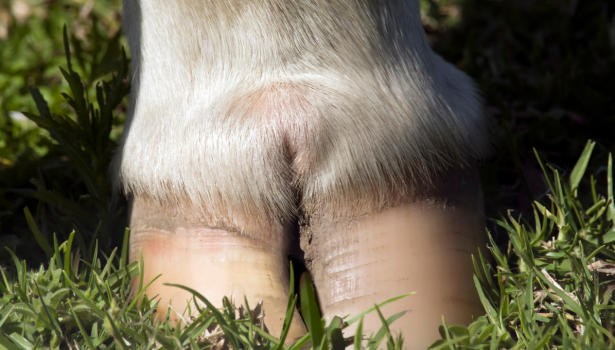
Kulawizna u bydła mlecznego (choroba Mortellaro). Skuteczne zwalczanie zapalenia skóry palca dzięki naturalnemu rozwiązaniu
Biodevas Laboratoires opracowała PIETIX – rozwiązanie w 100% naturalne, mające na celu zwalczenie zapalenia skóry palca u bydła mlecznego.
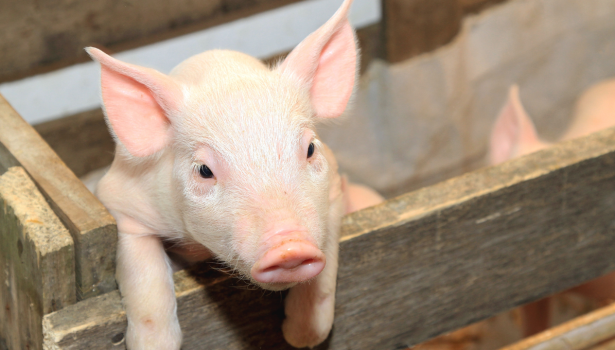
Czynniki wpływające na kolonizację mikrobiomu i dojrzałość układu pokarmowego prosiąt oraz jego prawidłowe funkcjonowanie
Piśmiennictwo dr inż. Piotr Nowak Facebook0Tweet0LinkedIn0

Opieka stomatologiczna nad starszymi końmi
Piśmiennictwo lek. wet. Katarzyna FerenzGabinet weterynaryjny Końskie Zdrowie we Wrocławiu Facebook0Tweet0LinkedIn0

Praktyka w terenie – jak zabezpieczyć się na wypadek stanów zagrożenia życia lub zdrowia zwierzęcia
Piśmiennictwo mec. Anna SłowińskaVox Poland Pomoc PrawnaSzczecin Facebook0Tweet0LinkedIn0

Wiek ma ogromne znaczenie podczas stawiania diagnozy
Lek. wet. Justyna Domagała tytuł inżyniera zootechniki uzyskała w 2016 r., a tytuł lekarza weterynarii – w 2019 r. na Uniwersytecie Przyrodniczym we Wrocławiu. Po studiach swoją wiedzę poszerzała podczas stażu w Szpitalu dla Koni Equivet, w którym później uzyskała zatrudnienie. W latach 2021-2024 swoją pracę skupiała na internistycznym leczeniu koni oraz pogłębianiu wiedzy na […]
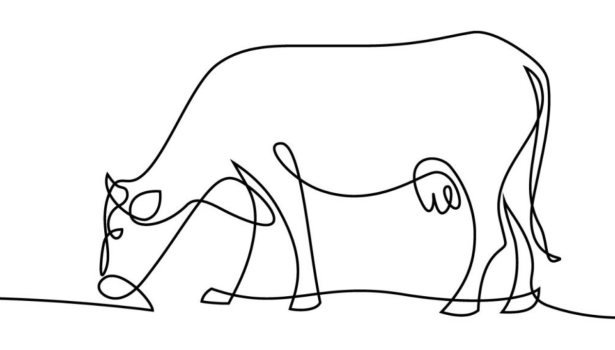
Echa 32. Kongresu Bujatrycznego w Cancun
Profilaktyka Kongres był również okazją do zaprezentowania kilku przełomowych produktów immunologicznych, które mają szansę wprowadzić na nowe tory prewencję znanych od lat jednostek chorobowych, sprawiających wiele kłopotów z punktu widzenia odchowu cieląt czy rozrodu. Mowa tu konkretnie o trzech nowych szczepionkach mających zastosowanie w profilaktyce Mycoplasma bovis, Cryptosporidium parvum czy wirusowej biegunki bydła (BVD). Nie […]


